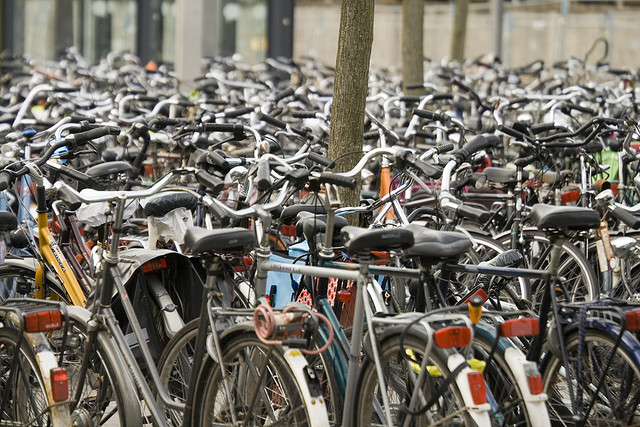
Active Modes of Transport Prevent Lifestyle Diseases
According to a new study active modes of transport help in the prevention for sedentary lifestyle diseases and car ownership had a strong negative relationship with physically active travel. The Dutch provide us with valuable evidence for the critical benefits of environments and cultures which support healthy, active urban lifestyles. In addition, walking, cycling and using public transport are indispensable starting points for urban design.
 Flickr/Patrick Goosseens
Flickr/Patrick Goosseens
Modern, urban lifestyles threaten human health as they have “engineered physical activity out of everyday life” say Fishman, Böcker & Helbich in their new paper on the health benefits of active travel. Since physical activity benefits are cumulative, they analysed all walking and cycling trips, including trips related to using public transport.
Key findings:
- 57 percent of the entire sample of 74,465 individuals failed to record any walking or cycling
- Dutch men and women do 24 & 28 minutes of daily physical activity by walking and cycling. The authors note it is 41 and 55 percent over minimum recommended amounts
- car ownership had a strong negative relationship with physically active travel.
They conclude that their analyses demonstrate the significance of active transport as prevention for sedentary lifestyle diseases. The Dutch provide us with valuable evidence for the critical benefits of environments and cultures which support healthy, active urban lifestyles.
Walking, cycling and public transport: needed for urban design
The evidence continues to mount. Walking, cycling and using public transport are indispensable starting points for urban design. They can, and as shown in this study, do provide populations opportunities to achieve and exceed the minimum amounts of physical activity needed. But, this only applies to those who do it, and not the majority who do little or no walking or cycling.
A frighteningly high proportion of the EU population has been telling researchers they do not walk or cycle despite years of warnings, HEPA promotion campaigns, and more.
What’s stopping them? The last word comes from Fishman: “Car ownership had a strong negative relationship with physically active travel.”
About the author
 Randy Rzewnicki has a wealth of experience in the world of cycling having previously worked with Fietsersbond Brussels (Brussel’s Cyclist Union) and a range of other EU funded Projects such as CycleLogistics & Life-Cycle. He is currently co-managing the Pro-E-bike Project, which is pushing for behavioral change in professional freight and transport.
Randy Rzewnicki has a wealth of experience in the world of cycling having previously worked with Fietsersbond Brussels (Brussel’s Cyclist Union) and a range of other EU funded Projects such as CycleLogistics & Life-Cycle. He is currently co-managing the Pro-E-bike Project, which is pushing for behavioral change in professional freight and transport.
Follow Dr Randy Rzewnicki on Twitter @ECFhealth
- Log in to post comments
Contact the author
Recent news!
Upcoming events
Contact Us
Avenue des Arts, 7-8
Postal address: Rue de la Charité, 22
1210 Brussels, Belgium









